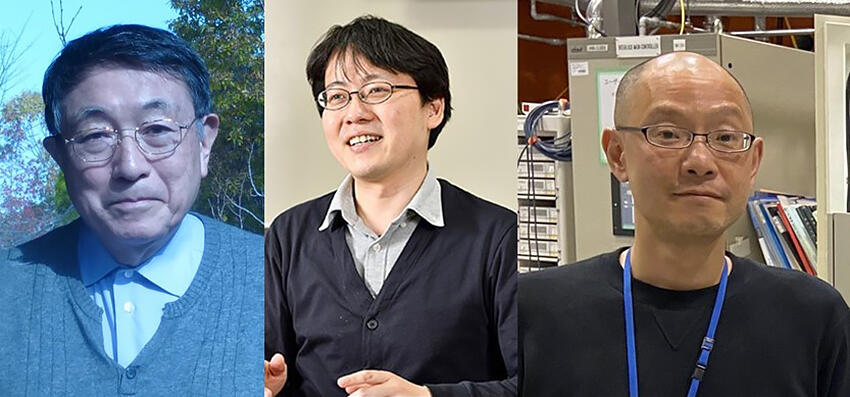A research group led by Project Professor Yuichiro Maéda of the Graduate School of Science, Nagoya University (currently a visiting professor at the Graduate School of Informatics), Assistant Professor Yusuke Kanematsu of the Graduate School of Advanced Science and Engineering, Hiroshima University, and Special-Appointment Assistant Professor Shuichi Takeda of the Research Institute of Interdisciplinary Science, Okayama University, announced that they have successfully obtained the crystal structure of the protein F-type actin at a 1.15-Å resolution and identified the ATP hydrolysis reaction mechanism.
The group successfully obtained the crystal structures before and after the hydrolysis reaction by measurement with the single crystal measurement beamline (BL2S1) at the Aichi Synchrotron Radiation Center in Seto City, Aichi Prefecture. Based on their measurements, they used quantum mechanics/molecular mechanics "QM/MM calculations" to reveal the structures. The hydrolysis reaction is the first half of the ATPase reaction and is expected to be fully revealed in the future. The group's results were published in the October 17 issue of PNAS.

Provided by Nagoya University
ATP (adenosine triphosphate) is an intracellular compound essential for the vital activity of all living organisms. ATP converts chemical energy into mechanical energy and information. This conversion occurs when proteins bind ATP inside the protein and hydrolyze it to ADP (adenosine diphosphate) and Pi (inorganic phosphate) when needed. This entire process is termed ATPase. The process is thought to consist of a hydrolysis process (ATP-binding protein + H2O → ADP-Pi-binding protein chemical reaction) in the first half and a Pi release process and DP/ATP exchange process in the second half. On the other hand, not much was known about the structural information, and the identification of the reaction mechanism was incomplete.
Actin exists in monomeric (G-type) and polymeric (F-type) forms, and only F-type actin possesses ATPase activity, but its structural analysis has been difficult. In contrast, the research group found that when actin molecules bind one-to-one to domain 1 (F1 protein) of fragmentin (actin-binding protein) to form a complex (F1A complex), actin is captured by the F-type. They confirmed that it has virtually the same properties as polymeric F-type actin
As such, they conducted an X-ray crystallographic analysis of the high-resolution structure using the F1A complex. As a result, they succeeded in revealing the high-resolution structures of ATP-bound and ADP-Pi-bound (including trapped water molecules) before and after hydrolysis, and ADP-bound F-type actin molecules after Pi release. Next, they used the QM/MM method, a computational method based on quantum mechanics and classical mechanics, to analyze the reaction pathways of ATP-bound type and ADP-Pi-bound type before and after hydrolysis. The results of their analysis were very consistent with previous studies.
Furthermore, of the two theories of the ATP hydrolysis reaction, the results of this study supported the dissociative path. In the future, the group intends to reveal the mechanism of the entire process by conducting experimental verification of the release process of phosphate, analysis of mutants, and other means.

Provided by Nagoya University
Journal Information
Publication: Proceedings of the National Academy of Sciences of the United State of America (PNAS)
Title: Structures and Mechanisms of actin ATP hydrolysis
DOI: 10.1073/pnas.2122641119
This article has been translated by JST with permission from The Science News Ltd.(https://sci-news.co.jp/). Unauthorized reproduction of the article and photographs is prohibited.




